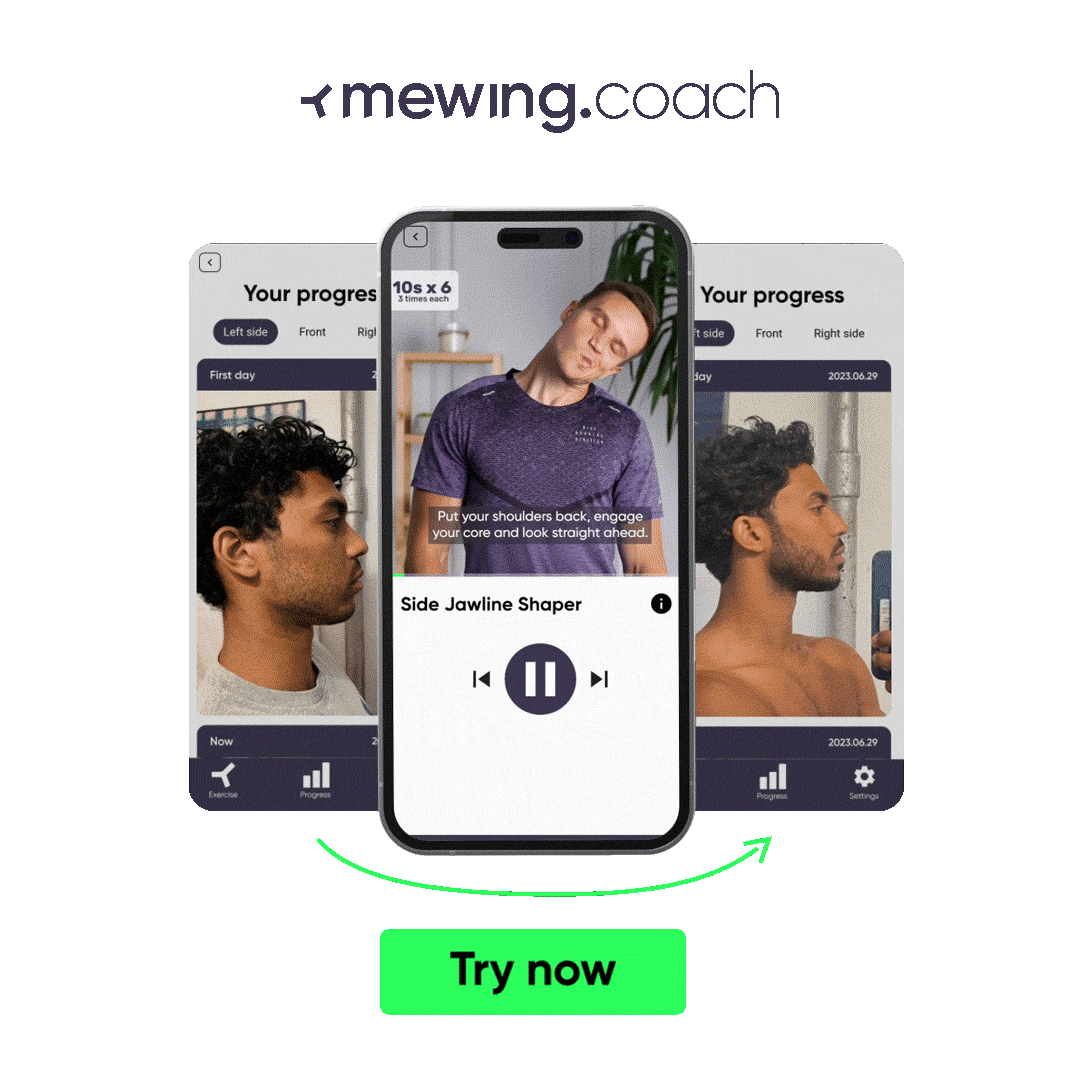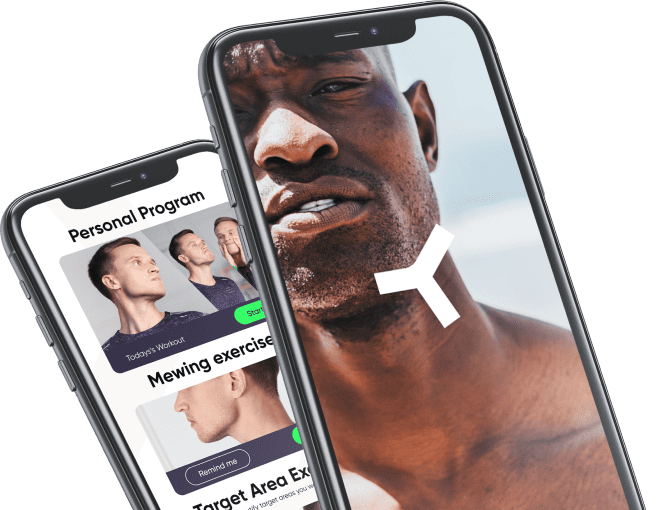Hunter eyes are one of the most sought-after facial features. They’re often described as deep-set, almond-shaped eyes with a positive canthal tilt (where the outer corner of the eye is slightly higher than the inner). This creates an intense, focused, and confident look — often seen in models, celebrities, and what many call the “masculine ideal.”
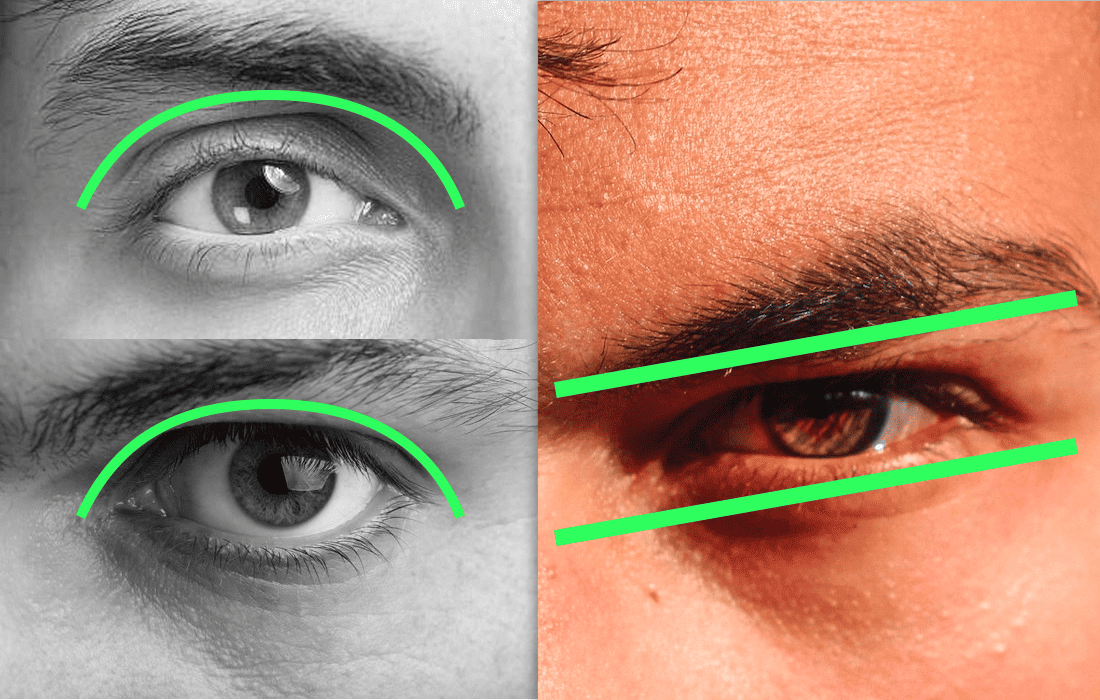
But here’s the big question: Can you actually get hunter eyes naturally?
The short answer: yes, to an extent. While genetics play the largest role, exercises like mewing (proper tongue posture), posture correction, and lifestyle habits can enhance the appearance of your eyes and facial structure without surgery.
👉 Take our quick quiz below to find out your personalized action plan to achieve hunter eyes naturally.
What Are Hunter Eyes? (Definition + Key Features)
Hunter eyes are deep-set, almond-shaped eyes with a slightly upward outer corner (positive canthal tilt), minimal eyelid exposure, and little to no visible eye white below the iris. This eye shape creates an intense, focused, and confident appearance that is often considered more attractive and masculine compared to rounder or protruding “prey eyes”.
Research confirms that faces with an accentuated canthal tilt were rated more attractive 93% of the time (PubMed) and that a positive canthal tilt is linked to youthfulness and perceived health (Glamour).
Key features of hunter eyes include:
- Deep-set eyes – the eyeball sits further back into the skull.
- Almond shape – narrow and slightly upturned at the corners.
- Positive canthal tilt – outer eye corner higher than the inner corner.
- Minimal upper eyelid exposure – little to no eyelid fold is visible.
- Low scleral show – the white part of the eye below the iris is barely visible.
Hunter Eyes vs. Prey Eyes: Comparison
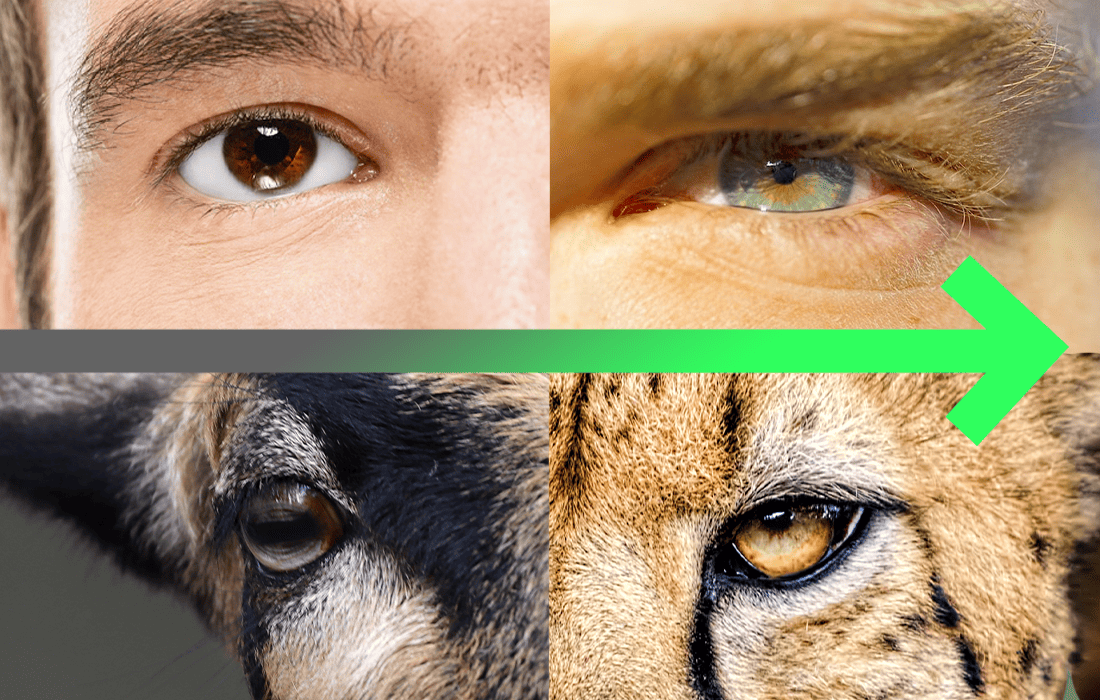
(Prey eyes on the left, hunter eyes on the right)
When discussing facial aesthetics, people often contrast hunter eyes (deep-set, intense, and confident) with prey eyes (rounder, softer, and more vulnerable). The table below summarizes the main differences:
| Feature | Hunter Eyes | Prey Eyes |
|---|---|---|
| Eye Position | Deep-set | Protruding |
| Shape | Almond | Round |
| Canthal Tilt | Positive (upward) | Negative (downward) |
| Eyelid Exposure | Minimal | Prominent |
| Look | Intense, confident | Gentle, submissive |
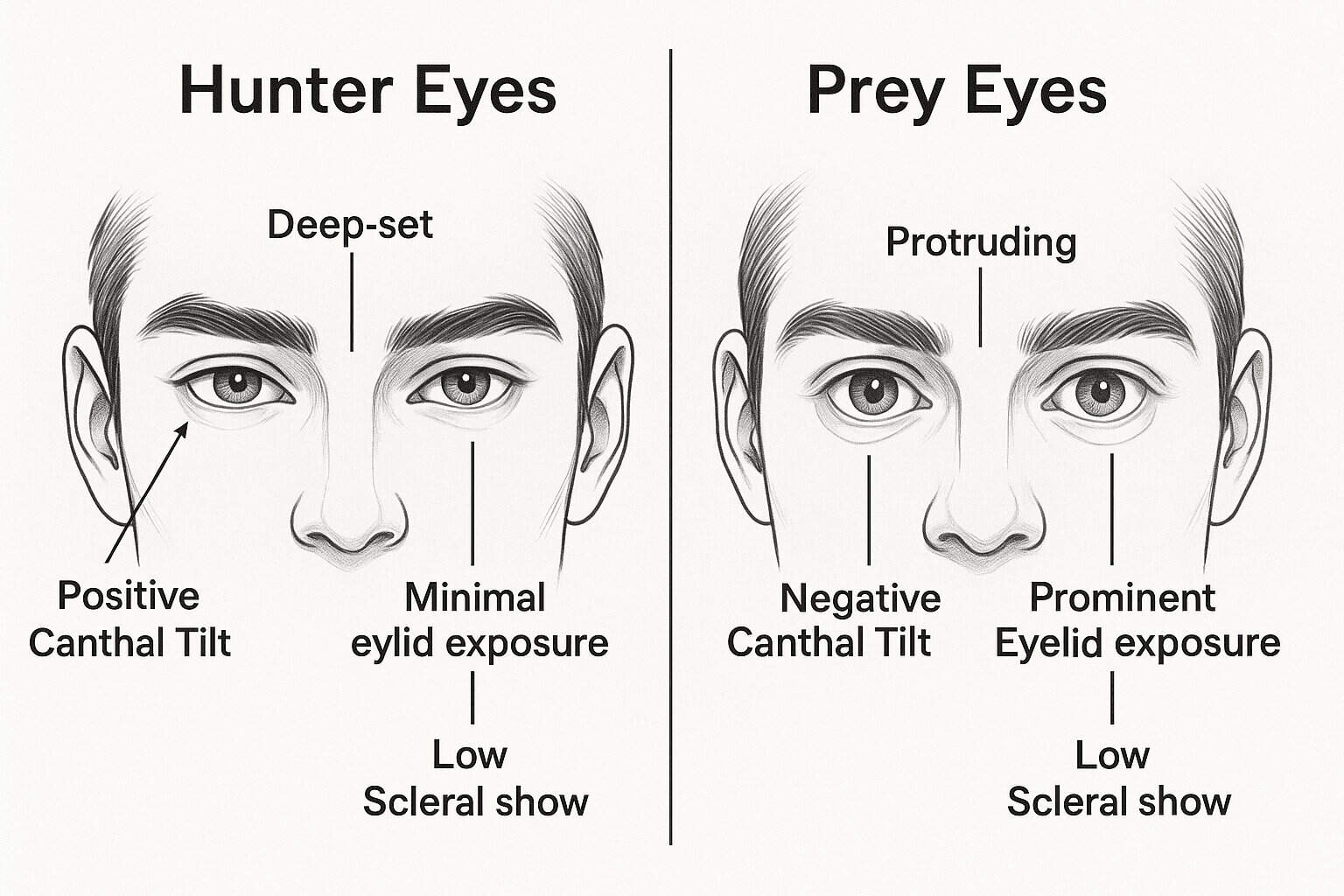
The key difference lies in projection and tilt: hunter eyes sit deeper in the skull with an upward angle, creating a sharp and predatory appearance, while prey eyes protrude more and angle downward, giving a softer, cautious look. This comparison helps explain why hunter eyes are often perceived as more attractive, dominant, and masculine, whereas prey eyes are associated with vulnerability and a less assertive gaze.
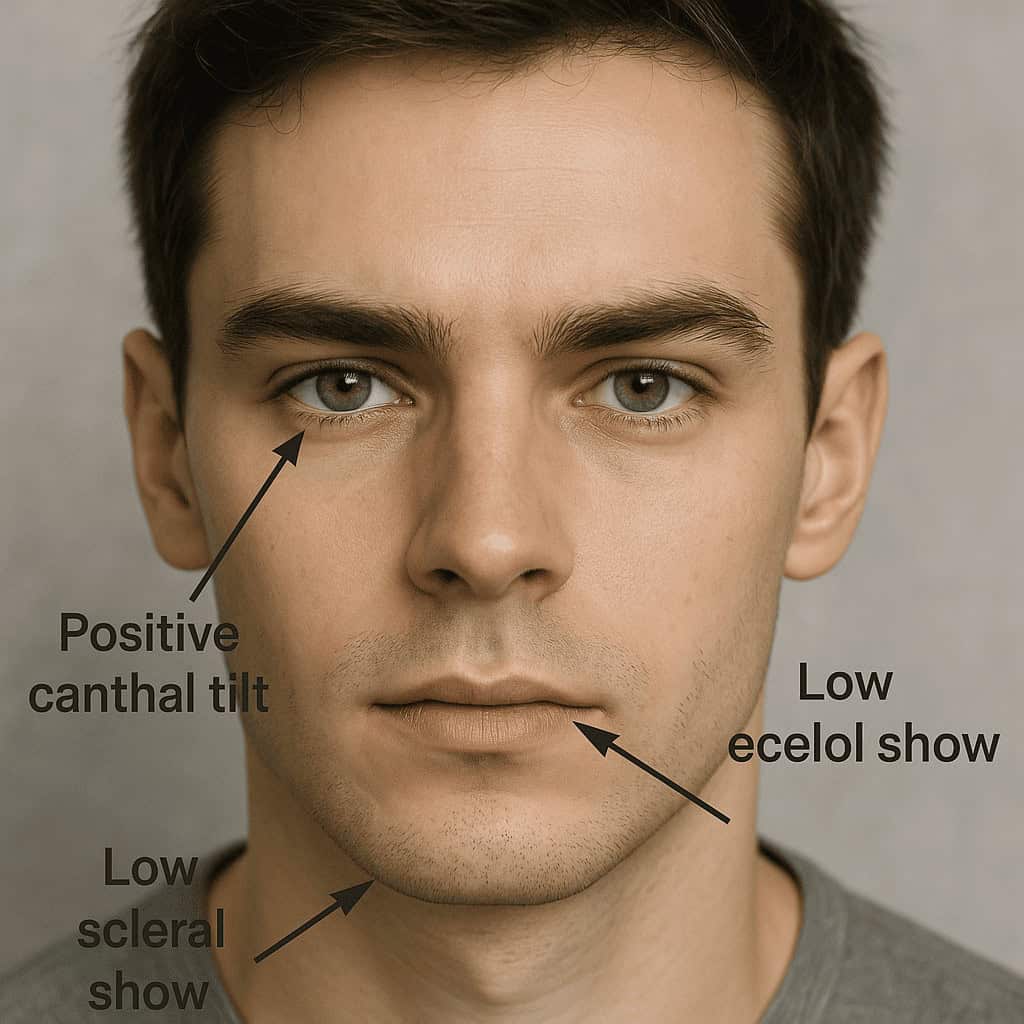
Can You Get Hunter Eyes Naturally?
Here’s the truth:
- Genetics decide your orbital bone structure and natural tilt.
- But mewing, posture, and certain exercises can help improve the support around your eyes, reduce puffiness, and make your gaze appear sharper and more “hunter-like.”
It’s important to note that while mewing (pressing the tongue to the palate) has gone viral, scientific evidence proving it can reshape facial structure in adults is lacking (AAO, Washington Post). A 2019 orthodontic study found only weak correlations between tongue posture and dental arch width (PMC), suggesting effects are modest. Still, orthodontic experts agree that good oral posture is beneficial for oral health, even if it doesn’t dramatically change eye shape (Health.com).
5-Step Tutorial: Hunter Eyes Exercise with Mewing
The most effective hunter eyes exercise is mewing — the practice of keeping your tongue on the roof of your mouth to encourage forward maxilla growth and better facial support.
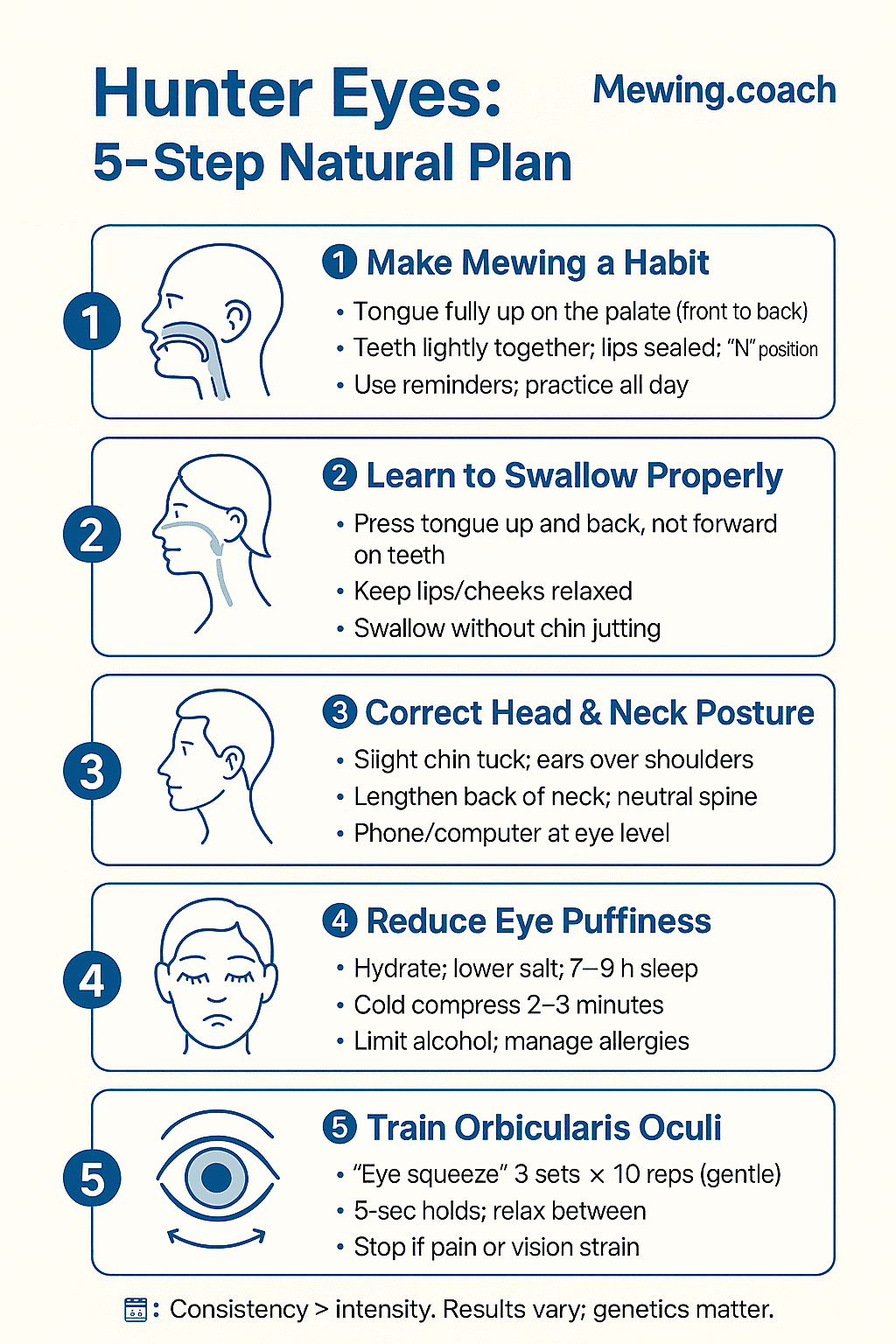
1. Make Mewing a Habit
The habit of mewing is not easily achievable and yet is vital for getting hunter or cat eyes. Mewing should not be done occasionally (in periods) – it should be an activity that becomes second nature.
Our Mewing.coach app has an integrated reminder function that lets you know when it’s time to practice. By keeping you consistent, it ensures you never miss a mewing session and helps you get the full benefits of mewing over time.
Mewing.coach not only sends you reminders but also provides step-by-step tutorials that make it easier to maintain correct tongue posture and avoid mewing mistakes.
2. Learn to Swallow Properly
A correct swallow involves pressing the tongue upward, not pushing forward with the teeth. Over time, this helps maintain tongue posture naturally.
3. Correct Your Head and Neck Posture
Forward-head posture makes your eyes look more protruding. Keep your chin tucked slightly and your head aligned with your spine.
4. Reduce Eye Puffiness
Stay hydrated, lower salt intake, and sleep well. Puffy eyes can soften the gaze and reduce the “hunter” effect.
5. Train Orbicularis Oculi (Eye Muscles)
Simple squinting exercises or “eye squeezes” can tone the muscles around the eyes, giving a firmer, more lifted appearance.
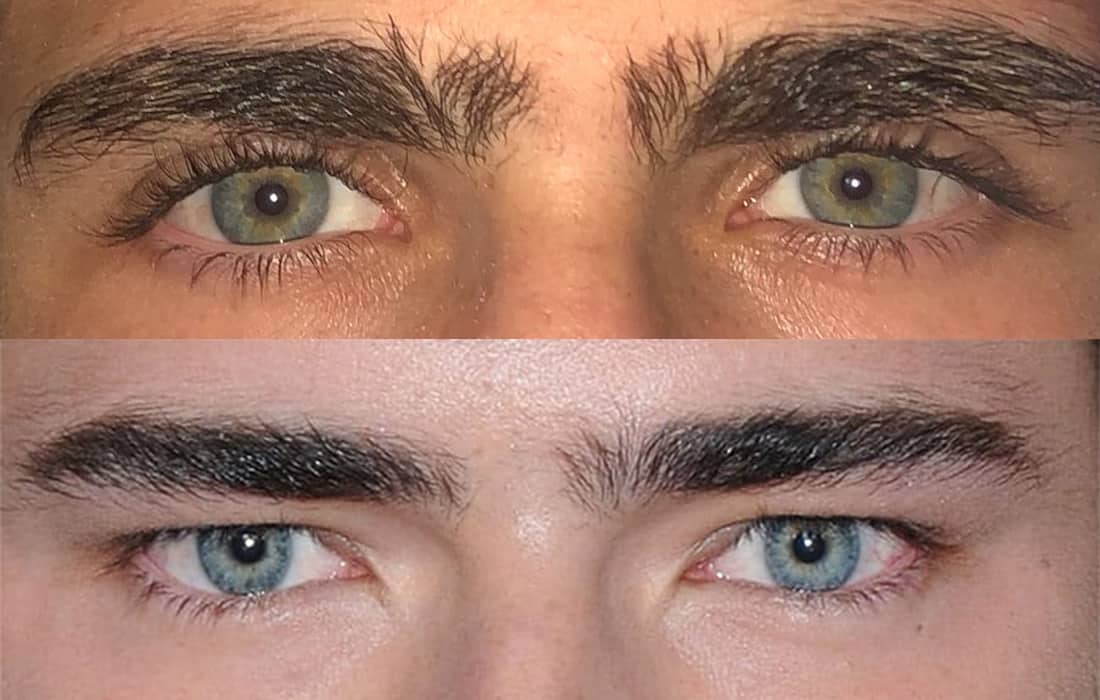
(Hunter eyes achieved naturally through training and exercises – before and after)
Other Ways to Enhance Hunter Eyes Naturally
- Lower body fat – a leaner face makes the orbital area more defined.
- Good skincare & grooming – dark circle creams, eyebrow shaping, and even subtle makeup (like eyeliner) can create a sharper eye look.
- Facial massage/face yoga – helps with circulation and muscle tone.
Surgical Options (Last Resort)
If natural methods aren’t enough, cosmetic surgery can alter eye shape. Common procedures include:
- Blepharoplasty – eyelid lift to reduce droopiness.
- Canthoplasty/Canthopexy – tightening or repositioning the outer eye corner.
- Orbital decompression – reduces eye protrusion.
⚠️ Important: Surgery carries risks and should only be done with a qualified surgeon. Always try natural methods first.
FAQs About Hunter Eyes
Can mewing give you hunter eyes?
Mewing can indirectly improve support for the maxilla and eye area, which may enhance a hunter-like appearance, but experts emphasize that bone structure is mostly set in adults and results will vary (AAO, Wikipedia). However, there are numerous mewing before and after transformations showing how improved maxilla support can influence the eye area. So, at some extent, mewing works for hunter eyes.
How long does it take to see results?
It depends on whether you practice soft vs hard mewing. Soft (regular) mewing may take around 6–12 months to show noticeable changes, while hard mewing can accelerate results, with some transformations appearing in as little as 3–4 months. However, it’s important to note that results can vary greatly, and in some cases mewing may not lead to visible changes at all.
Are hunter eyes genetic?
Mostly yes. But posture, body fat, and lifestyle choices play a significant role in how your eyes appear.
Final Advice
Hunter eyes are partly genetic — but you can train, posture, and groom your way closer to the look. Mewing is the best natural exercise to support facial structure, but combine it with lifestyle changes for best results.+
Further Reading
- Bashour M. et al., “Is medial canthal tilt a powerful cue for facial attractiveness?” – Faces with exaggerated canthal tilt were preferred 93% of the time in controlled experiments
- AAO Info, “Is Mewing Bad for You?” – Official position highlighting lack of evidence for structural change via mewing
- Fatima F. et al. (2019), cephalometric study on resting tongue posture – Weak correlations with dental structure
- Washington Post, “This mouth exercise may lead to dental or jaw issues” – Expert warnings about mewing’s limitations and risks in adults
- The Guardian, “Know the dangers of ‘orthotropics’” – Orthotropic claims dismissed by dental authorities as pseudoscience
- Wikipedia – Mewing (orthotropics) – Notes mewing is unproven and not accepted by mainstream orthodontics
- Health.com, “Does Mewing Work—and Can It Reshape Your Face?” – Comprehensive overview of the trend and lack of supporting evidence
